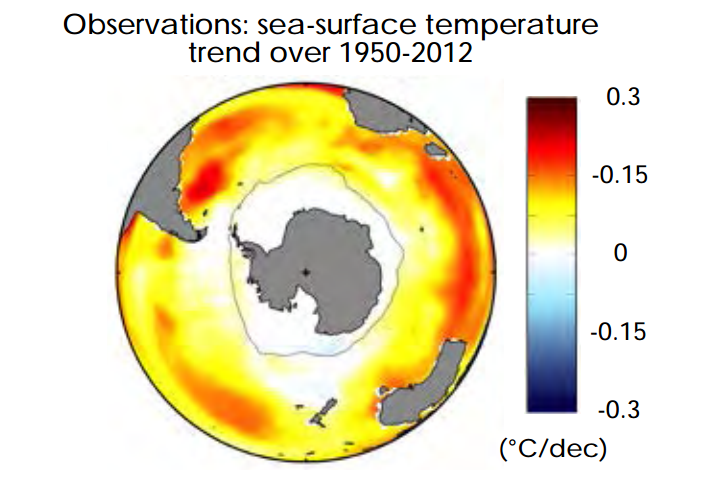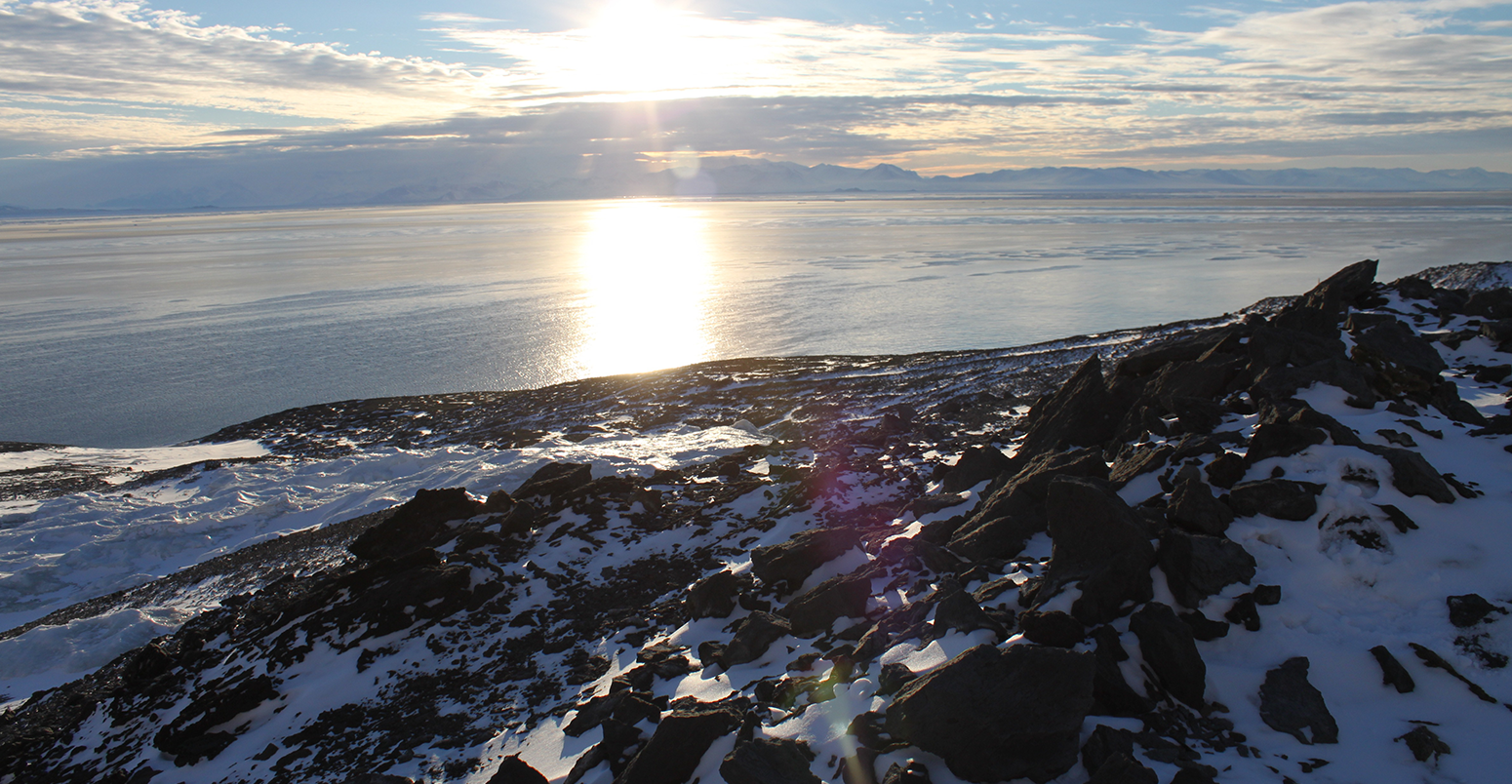Ocean conveyor key to sluggish Antarctic warming, study says
Robert McSweeney
05.30.16Robert McSweeney
30.05.2016 | 4:00pmWhile the Arctic is warming at twice the rate of the global average, on the other side of the planet, warming of the Southern Ocean around the Antarctic has been much slower.
A new study finds the key to this lack of warming lies in an ocean conveyor system that carries warm water away from Antarctica, and pulls cold water up from a depth of thousands of metres in its place. The researchers have, for the first time, tracked where this ocean heat goes.
The results suggest that warming in the Southern Ocean will only start to catch up with the rest of the world once this deep water also warms – which could take hundreds of years.
Conveyor belt
Heat is transported around the world’s oceans via a giant conveyor belt. It’s one part of this conveyor system, for example, that brings warm water up from the Caribbean to the North Atlantic, giving Europe its relatively mild climate.
While scientists have long known about this system, the new study, just published in Nature Geoscience, finds that it is dampening the warming in the region of the Southern Ocean around Antarctica.
Lead author Dr Kyle Armour, assistant professor of oceanography and atmospheric sciences at the University of Washington, explains to Carbon Brief how the most southerly part of the ocean conveyor carries water into and out of the Southern Ocean:
When the water arrives at the surface of the Southern Ocean, it is warmed by the air above it. But the ocean conveyor means that this warm water doesn’t stay put.
The researchers tracked where the heat was going using a combination of observations from a global fleet of 3,000 drifting floats, known as the Argo array, and climate model simulations.
Their findings show that the majority – approximately 68% – of the heat taken up by the most southerly parts of the Southern Ocean is then carried north, says Armour:
This northward flow of water in the Southern Ocean meets warm water travelling south from the Atlantic, Pacific and Indian Oceans, where collectively it is pushed down into the deep ocean.
By carrying heat away from Antarctica, the ocean conveyor slows the warming of the surrounding Southern Ocean, Armour says. As a result, it’s only warmed by 0.02C per decade since 1950, compared to 0.08C per decade for the average of the global ocean surface.
You can see this in the map below. It shows observed sea surface temperature change per decade between 1950 and 2012. The yellow and orange shading indicates areas of warming around the northern extremities of the Southern Ocean, while the white areas in Antarctica’s more immediate surroundings show little change.

Observed changes in annual sea surface temperatures around Antarctica, from 1950 to 2012, in degrees Celsius per decade. Red and yellow shading shows warming, while white shading shows no change. The grey line around Antarctica indicates the maximum winter extent of sea ice. Source: Armour et al. (2016) Supplementary information.
Significant warming
So, when will warming in the Southern Ocean really kick in? It could take hundreds or thousands of years, the study suggests.
The slow speed of the ocean conveyor means the waters rising up from thousands of metres deep in the Southern Ocean originally sank from the surface of the North Atlantic before the industrial revolution began. This means they haven’t yet been exposed to the warmer atmosphere caused by our CO2 emissions.
These deep waters won’t start to warm until surface waters that have been warmed by atmosphere cycles through the ocean conveyor belt, the paper says. Other studies suggest this could take around two centuries since CO2 emissions started to rise.
And once warming of the Southern Ocean gets going, it will continue for millennia, says Armour:
The findings highlight that not all of the planet responds to rising global temperatures in the same way, says Armour:
Land and sea ice
Another difference between the Arctic and Antarctic is that while Arctic sea ice has been declining steadily in recent decades, sea ice has actually increased around Antarctica.
You can see the maximum winter extent in Antarctic sea ice by the grey line in the earlier figure.
The dampening impact of the ocean conveyor doesn’t explain the increase, says Armour, but it may have a role to play:
And warming in the Southern Ocean as a whole is already impacting the ice shelves that spill out onto the ocean surface from Antarctica’s ice sheets, says Dr Emily Shuckburgh, deputy head of polar oceans at the British Antarctic Survey. She tells Carbon Brief:
This doesn’t bode well for Antarctica’s land ice in the future, warns Prof Andy Shepherd, director of the NERC Centre for Polar Observation and Modelling at the University of Leeds. He tells the Science Media Centre:
So, while the prospect of significant warming in the ocean around Antarctica is a long way off, it will only accelerate the loss of ice from Antarctica and its contribution to sea level rise.
Armour, K. et al. (2016) Southern Ocean warming delayed by circumpolar upwelling and equatorward transport, Nature Geoscience, doi:10.1038/ngeo2731


